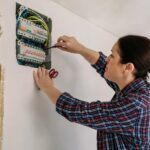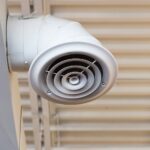Here’s the blog post formatted according to your specifications:
Understanding cable and wire locators
Cable and wire locators are essential tools for electricians and plumbers. These devices help professionals detect hidden wires and cables in walls, floors, and ceilings. They work by emitting electromagnetic signals that interact with conductors. Most locators consist of a transmitter and a receiver. The transmitter sends out a signal, while the receiver picks it up. This technology allows workers to trace cables without damaging surrounding structures.
Modern cable and wire locators offer various features. Some models can detect depths of up to 15 feet (4.5 meters). Others provide multiple frequencies for different types of cables. Advanced units even offer GPS mapping capabilities. The accuracy of these tools has improved significantly over the years. Today’s locators can pinpoint cables within 1 inch (2.5 cm) of their actual location.
Choosing the right Cable and wire locators depends on specific job requirements. Factors to consider include detection depth, frequency options, and display type. Some locators are designed for outdoor use, while others excel in indoor environments. It’s crucial to select a tool that matches the typical work conditions. Proper training in using these devices is also essential for accurate results.
Types of cables and wires
Electrical systems use various types of cables and wires. Common types include Romex, THHN, and coaxial cables. Romex is often used for residential wiring, while THHN is common in commercial settings. Coaxial cables are primarily used for video and data transmission. Each type has specific characteristics that affect how it’s detected.
The material composition of cables and wires influences their detectability. Copper wires are highly conductive and easy to locate. Aluminum wires, though less common, can also be detected. Fiber optic cables, which don’t conduct electricity, require special locating techniques. Understanding these differences is crucial for effective wire location.
Cable insulation also plays a role in detection. PVC insulation is standard in many electrical cables. XLPE insulation is often used for high-voltage applications. Some cables have metallic shielding, which can affect locator readings. Professionals must account for these variations when using locating equipment. Knowledge of cable types enhances the accuracy of locating efforts.
Best practices for using locators
Proper technique is crucial when using cable and wire locators. Begin by surveying the area visually for visible electrical outlets or junction boxes. These can provide clues about wire paths. Always calibrate the locator before use according to manufacturer instructions. This ensures accurate readings and reliable performance.
When scanning, move the locator slowly and steadily. Quick movements can lead to missed signals. Hold the device perpendicular to the suspected wire path for best results. Many professionals recommend scanning an area multiple times from different angles. This approach helps confirm initial findings and reduces the chance of errors.
Interpret locator signals carefully. Most devices use visual and audio cues to indicate wire presence. Learn to distinguish between strong and weak signals. Strong signals usually indicate close proximity to a wire. Weak signals might suggest deeper buried cables or interference. Always verify findings with a second method when possible. This could involve using a different frequency or consulting building plans.
Safety considerations
Safety is paramount when working with electrical systems. Always assume that wires are live unless proven otherwise. Wear appropriate personal protective equipment (PPE) such as insulated gloves and safety glasses. These items protect against accidental contact with live wires. Ensure that all tools, including locators, are properly insulated and in good condition.
Be aware of your surroundings when using locators. Avoid working in wet conditions, which increase electrical hazards. Pay attention to other utilities in the area, such as gas lines or water pipes. Some locators can detect these as well, helping prevent accidental damage. If unsure about a situation, consult with a supervisor or more experienced colleague.
Follow local regulations and codes when performing electrical work. Many jurisdictions require specific certifications for using certain types of equipment. Stay up-to-date with training and industry standards. This not only ensures compliance but also promotes safer work practices. Remember that no tool is infallible; always use caution and common sense.
Maintenance and care of locators
Proper maintenance extends the life and reliability of cable and wire locators. Clean the device after each use, removing any dirt or debris. Use a soft, dry cloth for cleaning. Avoid using water or harsh chemicals, which can damage sensitive components. Store the locator in a dry, cool place when not in use.
Regularly check batteries and replace them as needed. Many locators use standard alkaline batteries, while others have rechargeable options. Keep spare batteries on hand to avoid interruptions during work. Some high-end models feature low-battery indicators, helping prevent unexpected power loss.
Calibrate the locator periodically according to manufacturer recommendations. This typically involves testing the device on a known wire or cable. Some models offer self-calibration features. Keep a log of maintenance activities and calibrations. This record can be useful for troubleshooting and ensuring consistent performance. If the locator shows signs of malfunction, have it inspected by a qualified technician promptly.





